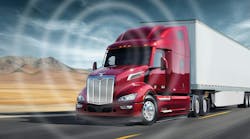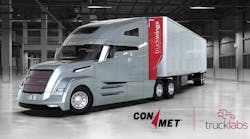Mike Branch
Vice President, Business Intelligence
Geotab (www.geotab.com) is a global leader in telematics, providing open platform fleet management solutions to businesses of all sizes.
It’s been 20 years since the U.S. government mandated that every new vehicle include an OnBoard Diagnostics (OBD) port. Around the same time, the term “big data” was coined. Both have steadily and fundamentally changed the way fleets are used, maintained and operated.
At the forefront of big data for fleets is telematics. It provides access to an abundance of data on vehicle position, speed, trip distance and time, idling, aggressive driving, seat belt use, fuel consumption, engine faults and more. However, effectively collecting and applying this data is important for fleets to better understand and optimize their operations.
DATA TOOLS
The primary challenge facing fleet is the enormous volumes of information that vehicular systems can generate. Traditional database systems often can’t efficiently process this volume of big data. To combat this, businesses migrate to systems designed specifically to manage and access their big data – either Cloud/hosted or on-premise – whose architecture and processing methods are capable of quickly analyzing large data sets.
One example is Google’s BigQuery. When queries are run on large datasets, BigQuery splits and distributes them across parallel nodes where they’re processed. The results from the parallel actions are then compiled and provided to the user.
Some businesses have also deployed machine learning platforms, such as scikit-learn and TensorFlow, to enable predictive analysis. These systems analyze seemingly disparate parameters to identify information that otherwise would be overlooked. For example, trucking companies can use a machine learning to analyze driving behaviors and traffic and road patterns to identify drivers that are at a higher risk of an accident.
BIG DATA BENEFITS
The big data trend means there’s no shortage of product options. An important feature to look for is application programming interfaces (APIs), which facilitate sharing of data between disparate IT systems. This allows businesses to integrate their own data with systems for maintenance, invoicing, route planning, risk management and safety.
With Geotab’s Open Platform fleet management solution, by way of example, the telematics device is only the portal to a whole ecosystem of mobile apps, add-ins, accessories and software solutions that allow fleets to monitor, analyze and optimize their operations.
To further maximize the benefits of big data, it’s important to build a culture of measurement by sharing that information across your organization. In order to do that, Geotab, in 2014, created an internal big data team in 2014, and it has identified three key items to consider when building a team of your own.
1. Include varied skills. The team should span a variety of departments, allowing multiple skillsets to collaborate on common objectives and discover new business insights.
2. Include data scientists. Your team should include data scientists, as their technical expertise is needed in working with large datasets, machine learning and statistical analysis.
3. Share across your organization. Include team members focused on delivering the information in an easy-to-understand format. The more widely big data can be applied across an organization, the better able it is to achieve goals such as minimizing fuel waste and increasing vehicle uptime.
BENCHMARK FOR IMPROVEMENT
Once you’ve gathered and shared big data across your organization, an important next step is benchmarking. This involves comparing your company's performance against a set of standards. It lets you visualize how competitive you are, where there are opportunities for improvement and make ongoing, systematic evolutionary steps forward. When producing benchmarks, it’s important to compare a fleet with like fleets in order to look at a cluster analysis and determine similarities. Clusters can be based on fleet size, vehicle composition, geography, industry, etc. Having the ability to benchmark against a similar fleet is crucial to understanding what your organization is truly capable of and where you can improve.
Measurement is a key distinguisher between good companies and great companies. They inspect what they expect. Gather all of the data you can, implement a solution to analyze your data, build a big data team and, finally, benchmark to gain an accurate view of how your company is doing. Big data accelerates your data-driven management.





